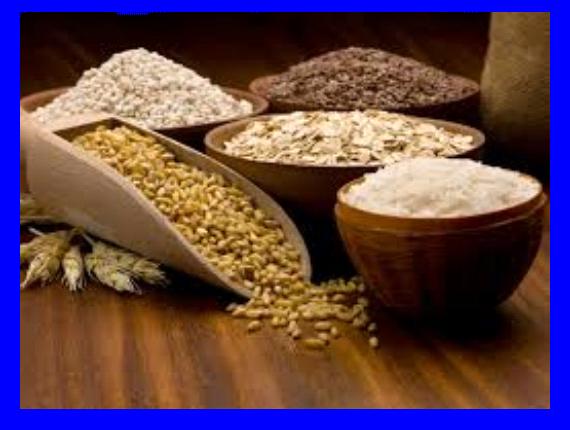Fiber, found only in plant-based foods, passes through your digestive system undigested. This unique characteristic allows it to deliver many health and holistic wellness benefits.
Foods rich in fiber include fruits, vegetables, whole grains, nuts, seeds, and legumes. Each provides different types of fiber that support various aspects of health and recommendations from a holistic center in Delaware Water Gap, PA.
The Two Types of Dietary Fiber
Dietary fiber falls into two main categories, each with distinct functions:
Soluble Fiber
This fiber dissolves in water, forming a gel-like substance in the digestive tract. It slows digestion and nutrient absorption, helping regulate blood sugar and lower LDL cholesterol levels.
Key sources: Oats, beans, apples, and citrus fruits
Insoluble Fiber
This fiber doesn’t dissolve but adds bulk to stool. It promotes regular bowel movements and prevents constipation by accelerating the passage of food through the digestive system.
Key sources: Whole-wheat flour, nuts, seeds, and vegetables like cauliflower
Evidence-Based Health Benefits of Fiber
Digestive System Improvements and Disease Prevention
Regular fiber consumption promotes healthy bowel movements and reduces constipation risk. Research shows it may help prevent diverticulitis, hemorrhoids, and reduce colorectal cancer risk.
Fiber also supports a diverse gut microbiome, which is essential for proper immune function and digestive health.
Cardiovascular Benefits and Cholesterol Management
Studies prove that soluble fiber lowers LDL (bad) cholesterol levels. It binds to cholesterol particles in the digestive system, helping the body get rid of them.
Regular fiber consumption can reduce blood pressure and decrease inflammation. Both of these play an important role in heart disease prevention.
Blood Sugar Regulation and Diabetes Prevention
Fiber slows glucose absorption, preventing blood sugar spikes after meals. This mechanism improves insulin sensitivity and may reduce Type 2 diabetes risk.
Consuming 25-30 grams of fiber daily helps people with diabetes control their blood sugar.
Weight Management and Satiety Enhancement
Most high-fiber foods need more chewing, giving your body time to register fullness. Fiber absorbs water and expands in your stomach, creating a sensation of fullness with fewer calories.
Increasing dietary fiber supports weight loss without making huge dietary changes.
The Gut-Brain Connection
Microbiome Influence on Neurotransmitter Production
The gut microbiome helps produce neurotransmitters like serotonin that regulate mood. The digestive tract, not the brain, produces up to 95% of serotonin. Dietary fiber helps it do that.
Fermentable fibers produce short-chain fatty acids (SCFAs) that protect the blood-brain barrier and reduce neuroinflammation.
Fiber’s Role in Reducing Anxiety and Depression
Research suggests that a fiber-rich diet may help reduce depression and anxiety symptoms. This effect likely occurs through reduced inflammation and improved gut barrier function.
Regular fiber intake stabilizes blood sugar and improves nutrient absorption of mood-supporting vitamins and minerals. This way, it makes you more resilient to stress.
Recommended Fiber Intake and Practical Implementation
Age and Gender-Specific Guidelines
Dietary guidelines state most adult women should aim for 25 grams of fiber daily, while men should target 38 grams. Adults over 50 may need less: 21 grams for women and 30 grams for men.
Children need age-appropriate amounts. These amounts are generally calculated as “age plus 5” in grams (e.g., a 7-year-old needs approximately 12 grams daily).
Gradual Increase Methods for Digestive Comfort
Increase fiber intake over several weeks to cut digestive discomfort. Add 2-3 grams of fiber daily until you reach your target.
Drink plenty of water when increasing fiber—at least 8 glasses daily—to help fiber work in your digestive system.
Quick Start Guide to Boosting Your Fiber Intake
Don’t overthink getting more fiber into your diet. Here’s how to get started right away:
- Begin with breakfast: Add 1 tablespoon of chia seeds (5g fiber) to your morning yogurt or oatmeal
- Upgrade your snacks: Replace chips with air-popped popcorn (3.5g fiber per 3 cups)
- Make simple swaps: Choose whole grain bread instead of white (3g vs 0.8g fiber per slice)
- Add a daily legume: Include ½ cup of beans in a salad or soup (about 8g fiber)
- Keep fruit visible: Keep high-fiber fruits like apples and berries on your counter
- Blend it in: Add a handful of spinach to smoothies (minimal taste impact, extra 2g fiber)
- Start meal planning: Aim for at least 8g fiber at each meal to easily reach daily goals
Potential Side Effects and Precautions for Fiber Consumption
Managing Common Digestive Adjustments
Temporary bloating, gas, or mild abdominal discomfort may occur when first increasing fiber intake. These symptoms usually resolve as your digestive system adapts.
Some individuals may be more sensitive to certain high-fiber foods. Track your symptoms to identify which specific foods cause discomfort.
Special Considerations for Medical Conditions
People with irritable bowel syndrome (IBS) should work with a healthcare provider. Their provider can help them identify which fibers they tolerate. Some may enjoy a low-FODMAP approach while maintaining adequate fiber intake.
Those with inflammatory bowel diseases like Crohn’s disease should see a gastroenterologist. This gives them information on appropriate fiber types and amounts.
Health Benefits of Fiber FAQs
Can fiber supplements replace fiber from food?
While supplements can help reach fiber goals, they can’t replace whole foods. Complete foods provide extra nutrients and varied fiber types. Use supplements to complement, not replace, fiber-rich foods.
How soon will I notice benefits from increased fiber intake?
Bowel regularity occurs within days, while cholesterol and blood sugar benefits usually take 4-8 weeks.
Are there any foods I should avoid when increasing fiber?
Focus on adding fiber rather than avoiding foods. If specific high-fiber foods cause discomfort, try something else.
Can high-fiber diets help with weight loss?
Yes, research shows high-fiber diets can support weight management. Fiber increases fullness, reduces calorie intake, and improves gut microbiome health.
Is it possible to consume too much fiber?
Excessive fiber (usually >70g daily) may reduce mineral absorption and cause digestive distress. Most people don’t need to worry about this unless taking large amounts of fiber supplements.
Integrating Fiber for Holistic Health Benefits
Dietary fiber offers comprehensive benefits extending from digestive health to mental wellbeing. By incorporating fiber-rich foods into your diet, you can support many body systems.
Consider consulting with a holistic center in Delaware Water Gap, PA. They can personalize your approach based on your specific health needs and goals. This is a great example of holistic wellness principles that treat the entire body.
Start with small, consistent changes to build sustainable habits that deliver fiber’s many benefits.
Resources:
https://medlineplus.gov/ency/patientinstructions/000193.htm
https://medlineplus.gov/dietaryfiber.html
https://effectivehealthcare.ahrq.gov/health-topics/dietary-fiber
https://www.healthline.com/nutrition/22-high-fiber-foods
https://www.healthline.com/health/food-nutrition/too-much-fiber
https://www.mdanderson.org/cancerwise/8-tips-for-reaching-your-daily-fiber-intake.h00-159622590.html




